The issue is resolved and closed.
Best answer
Camomila 7 (37214) 6 47 129 8 years
LICHTENBERG FIGURES - patterns of distribution of spark channels spreading along the surface of a solid dielectric during the so-called. sliding discharge. First observed by G. K. Lichtenberg in 1777.
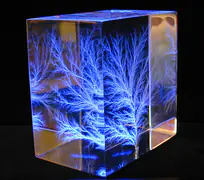
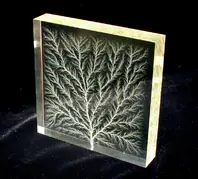

1012 V/s in the discharge gap, conditions arise that are characteristic of a nanosecond electrical breakdown. Electrical voltage The fields in the gap can be amplified up to 102 times on microroughnesses of the surface of the dielectric and electrodes. In this case, the time of development of the discharge becomes commensurate with the time of occurrence of elementary processes in the plasma, which leads to deviation from the avalanche (Townsend) and streamer mechanisms (see Gas breakdown), and even when high currents flow (-105 A), the discharge remains diffuse, the channel no arc discharge is formed.
In such severe regimes, the current of the leader (incomplete) stage can exceed the current of the subsequent completed discharge gap, and the discharge radiation at this stage contains an intense UV component (up to soft X-rays). This radiation creates free photoelectrons at distances significantly exceeding the critical one. sizes of primary avalanches. At a pulse voltage of 50-200 kV, plasma surfaces up to 200 cm in length easily appear along the surface of the dielectric, the brightness temperature of which can reach 6 * 104 K. Specifics of S. r. is determined by the active interaction of the discharge plasma with the surface of the dielectric, which is reflected in the spectral characteristics of the plasma radiation. Channel S. r. limited in space dielectric. substrate, so its cross-sectional area is smaller, and the linear electric. the resistance is correspondingly greater than that of a free spark discharge. Low inductance and. relatively high resistance of completed S. r. provide high energy release power in the discharge channel, which leads to the formation of dense high-temperature plasma with a large emitting surface area (> m2).
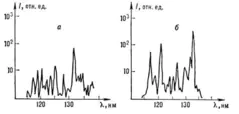
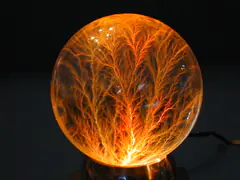
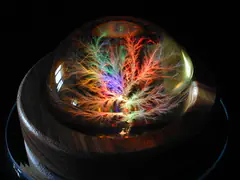
Lit.: Vollrath K., Spark light sources and high-frequency cinematography, in the book: Physics of fast processes, trans. from German, English, vol. 1, M., 1971; Dashuk P.N., Chelnokov L.L., Yarysheva M.D., Characteristics of a sliding discharge on the surface of solid dielectrics as applied to high-voltage switches, “Electronic technology, ser, 4. Electrovacuum and gas-discharge devices”, 1975, No. 6, p. 9; A n d r e v S. I., 3 o b o v E. A., Sidorov A. N., Method for controlling the development and formation of a system of parallel channels of sliding sparks in air at atmospheric pressure, “J. PMTF", 1976, No. 3, p. 12; 3 a r o s l o v D. Yu., Kuzmin G. P., Tarasenko V. F., Sliding discharge with CO2 and excimer lasers, “Radio Engineering and Electronics”, 1984, v. 29, v. 7, p. 1217; Brynzalov P.P. et al., Nitrogen laser based on a discharge sliding along the surface of a dielectric, “Quantum Electronics”, 1988, v. 15, no. 10, p. 1971. G. P. Kuzmin.
Answers
Wolfsangel 6 (17779) 2 3 14 8 years
They do it with electric shock. But again, someone lied about the method. They simply charge the cube between the plates of the capacitor, take it out and hit it with a hard object in the place from where the “tree” will grow.
Or they hit the same place on the Marx generator.
Receive one of the most read articles by email once a day. Join us on Facebook and VKontakte.
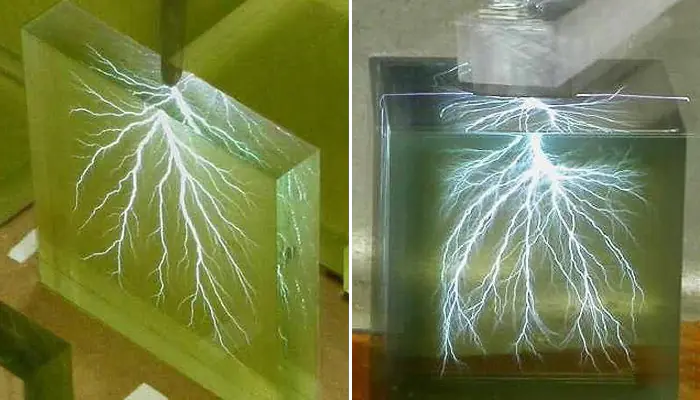
Of course, such an instance is not a matter of chance, in which, of course, there is a place for an uncontrolled distribution of the pattern, but still quite expected, but when lightning strikes a plane against the background of a rainbow, the result can really be unpredictable.
Did you like the article? Then support us press:
We can talk forever about the unlimited possibilities of acrylic. This material can do absolutely anything – even capture lightning! This unique ability was used by the American scientist and artist Bert Hickman. The former electrical engineer creates some very unusual electrical sculptures. In the literal sense of the word, it tames lightning - a powerful electric discharge freezes in the volume of acrylic. The most ordinary pieces of plexiglass take on a masterpiece shape. The effect of captured lightning amazes the imagination and causes genuine delight. The technology used by Bert Hickman makes the production of acrylic glass souvenirs an exciting, almost magical process.
Lightning is one of the most dangerous natural phenomena. We are accustomed to fearing it, while at the same time admiring its power. Bert Hickman challenged nature using acrylic to create stunning, beautiful electrical sculptures. Of course, to create his masterpieces, the artist does not use a real lightning bolt, but only its imitation. The fact is that the discharge must be directed to a strictly defined zone of the acrylic workpiece. The artist did not “negotiate” this with real lightning; he chose a simpler path and created conditions in his laboratory that were identical to natural ones.
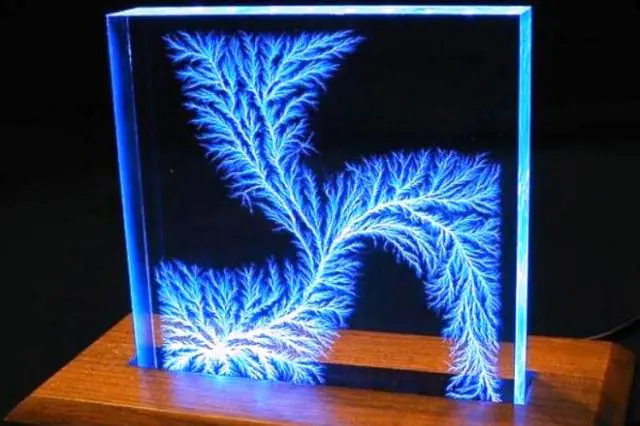
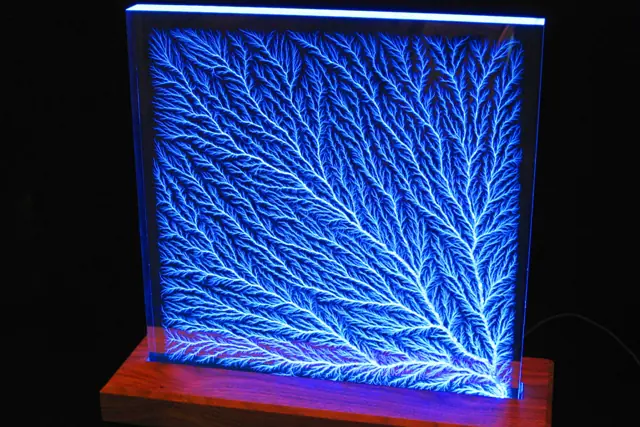
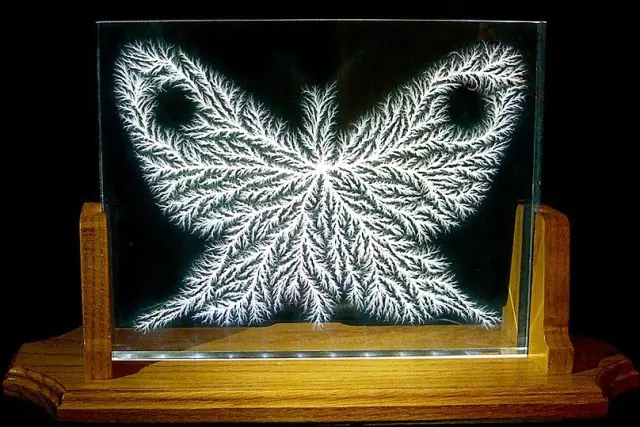
To create his creations, Bert Hickman uses transparent acrylic blanks of various shapes - cylindrical, rectangular, square, conical, spherical. Using a high-energy particle accelerator, an electrical discharge with a power of several million volts is passed through acrylic glass. Electrons spread at tremendous speed throughout the volume of the material, encounter an obstacle, slow down and freeze, leaving behind a specific pattern. During a short lightning discharge, powerful energy is released. Branched prints remain inside the acrylic - a cluster of microscopic thread-like cracks, collected into a single composition by the forces of nature itself.
The pattern formed inside the acrylic blank is a visual representation of the so-called Lichtenberg figures formed as a result of high-voltage electrical discharges. On the surface of a dielectric material, during a sliding discharge, spark channels are distributed along specific trajectories. The surface of the dielectric (in our case, acrylic) is deformed, and the trajectory of the discharge movement is imprinted on the surface. The fragments of the branched figure are self-similar; they clearly demonstrate their fractal properties. These are the figures that form when lightning strikes - on the ground, trees, houses, and on the skin of people struck by lightning. You rarely see such figures in nature.
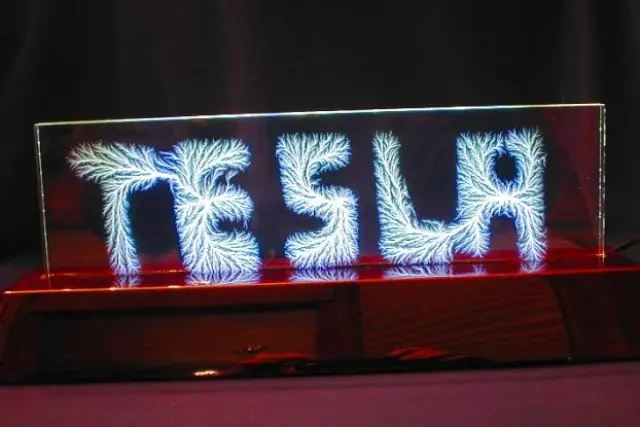
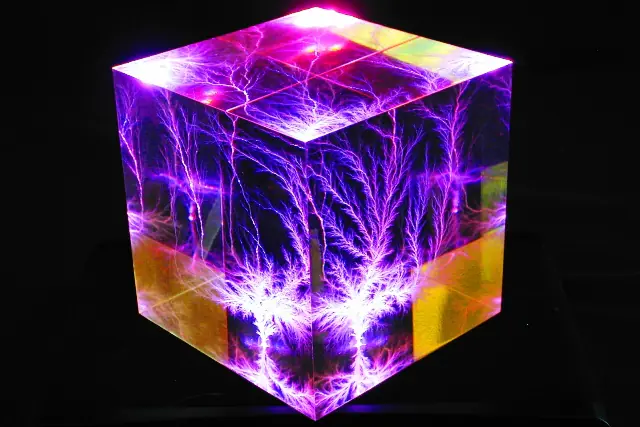
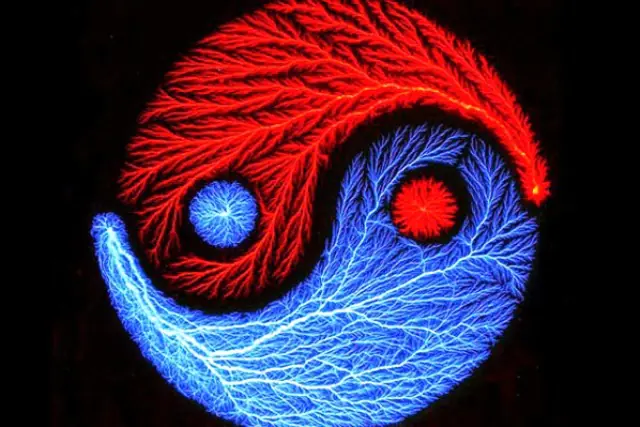
Captured lightning: production of unique souvenirs
Bert Hickman teamed up with his colleagues to create the group “Spark Whisperers”. The goal of the work of this group was an independent study of the phenomenon of lightning and methods of artificially producing its discharge. Initially, the author’s idea was to reproduce Lichtenberg’s figures in laboratory conditions. The “mad scientist,” as Bert Hickman calls himself, did exactly the right thing when he relied on acrylic when choosing the material for his experiments. Acrylic glass has demonstrated its amazing ability to "tame lightning."
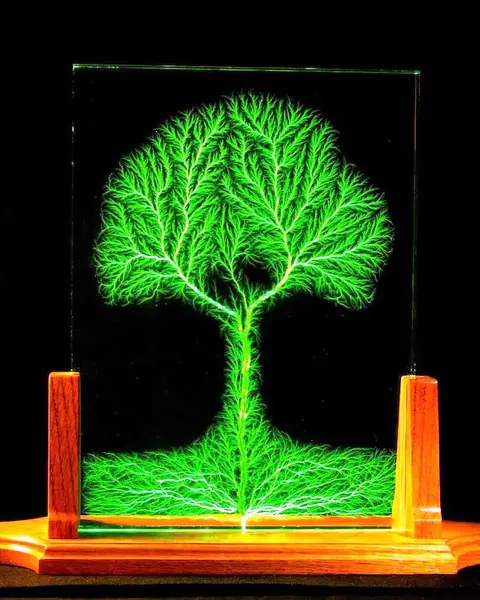

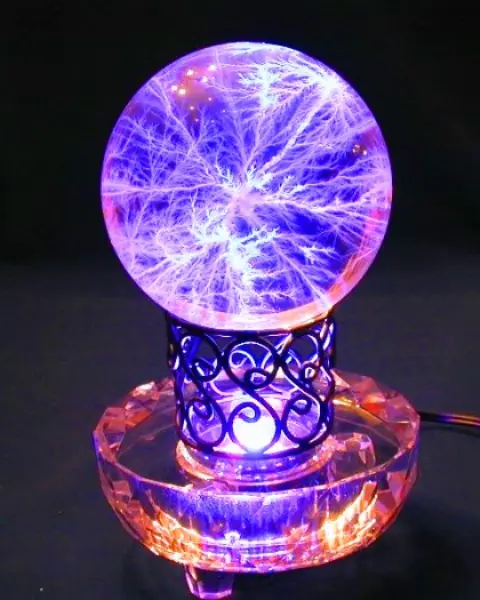
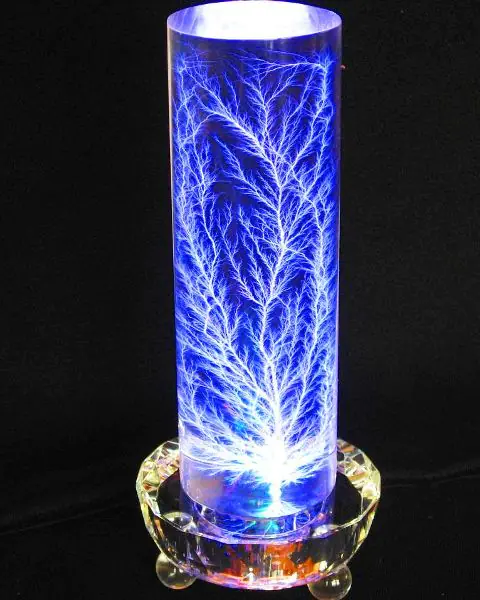
The experiment to capture an electrical discharge was carried out successfully. Perhaps the author of the project himself had no idea what beauty would come out of it. Pieces of acrylic with a “captive lightning” inside might have remained samples for laboratory research if not for the artistic flair of Bert Hickman. The scientist realized that his creations were valuable not only for science, but also for art. Today, one of the artist’s activities is the production of souvenirs from acrylic that has captured lightning.
By varying operating modes, changing the direction and intensity of the discharge, the scientist learned to create a wide variety of 2D and 3D patterns from Lichtenberg figures. To form complex patterns, the artist creates areas of low or high resistance using special coatings, thus indicating the path or creating barriers to the movement of an electrical discharge. Artificial lightning moves along a given path - this is how complex electrical images are formed. Trees, bushes, butterflies, stars, snowflakes, flowers, and symbolic images appear in electrical paintings. In some sculptures, electrical discharges are arranged in an orderly manner, in others they are completely chaotic. In both cases, “lightning in acrylic” makes an equally stunning impression.
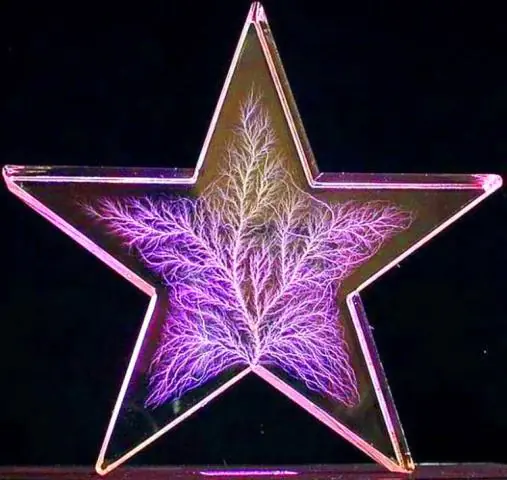
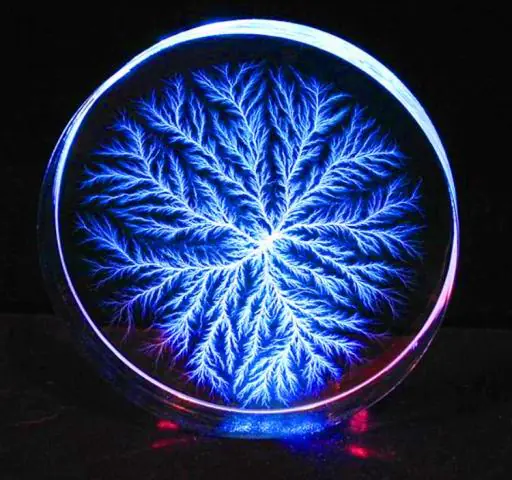
The finishing touch to all this splendor is LED lighting. To make the “captive lightning” look as bright and realistic as possible, the sculpture is illuminated in different colors. Each “branch” of the electrical pattern works like a small mirror, reflecting and scattering light radiation. Such products look especially impressive in a dark room: the transparent base merges with the dark background and becomes almost invisible, and the pattern glows with a bright radiance. It seems as if time has stopped and an electric discharge has frozen in the air.
All the artist’s sculptures are unique, like all natural phenomena. It is impossible to repeat the same pattern twice - each time the electric painting inside the acrylic will have unexpected shapes. A natural phenomenon that can only be observed in the natural environment for a few seconds remains inside the acrylic forever. You can admire such majestic beauty for a very long time - peer into every curve of the ornate pattern and be amazed at how ideal the contours created by nature can be.
Date of creation: 24 DEC 20151 Author "Akrilshik"



